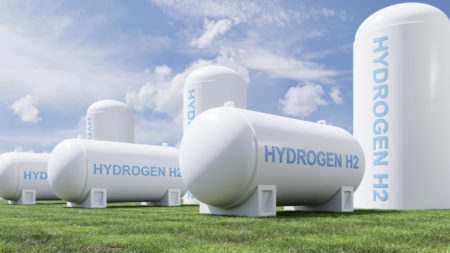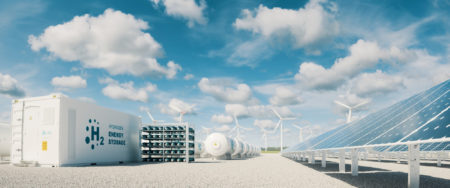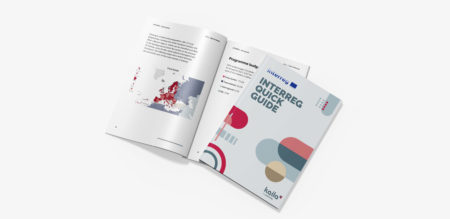
Opinion
IPCEI
Interest in and support for Hydrogen projects

José Luis Fernández de Piérola
Senior Consultant on National Spanish Projects
ENERGY CRISIS
EU energy and climate policies are facing major changes. What does it mean for funding?


Head of Brussels office
Fit for 55 may sound like a programme for middle-aged people who want to get back in shape, but it is actually a quite special name for the ambitious European Commission’s plan to set the EU reduce greenhouse gas emissions by 55 percent by 2030. De facto it is a set of proposals for new EU legislation with which the EU and its 27 member states plan to achieve the EU 2030 climate goal. It touches upon many aspects of society and it will bring dramatic changes for families and businesses for the most daily activities, from the way we drive our cars to the way we heat our homes.
The package was presented by the Commission in the summer 2021 and the legislative process involving the Parliament and the Council is in full swing during these months. Just to have an idea of the magnitude of this package, Fit for 55 includes proposed legislation on renewable energy, energy efficiency, energy taxation, EU Emissions Trading System (ETS), efforts sharing regulation, land use and forestry (LULUCF), alternative fuels infrastructure, Carbon Border Adjustment Mechanism, the new Social Climate Fund, CO2 emission standards for cars and vans, RefuelEU aviation and FuelEU maritime.
Two key elements of the Fit for 55 are the revision of the Renewable Energy Directive (RED II) and of the Energy Efficiency Directive (EED), which will help the EU deliver the new 55% GHG target. Currently the EU is obliged to ensure that at least 32% of its energy consumption comes from renewables and to reach the goal of 32.5% energy savings improvements by 2030.
As part of the revision process for the two directives, on 14 September MEPs voted to raise these targets even higher. The share of renewables has been upgraded to 45% by 2030 and the EU target to reduce final energy consumption has now been moved to at least 40% by 2030 and 42.5% in primary energy consumption compared to 2007 projections. The Council and the Parliament will now enter interinstitutional negotiations to agree on the final text of the two directives.
The package is nevertheless not only about policy changes. Funding mechanisms will also be affected, and their revenue is intended to come from the current Emissions Trading System and also from the “new” ETS which will cover the buildings and road transport sectors.
Innovation fund
The European Commission proposed to top up the Innovation Fund, currently sourced from 450 million allowances from the existing ETS in 2021-30, with 50 million allowances from the existing ETS and 150 million allowances from the new system covering emissions from road transport and buildings.
In addition, under the proposal, allowances which would otherwise be allocated for free to industry sectors covered by the Carbon Border Adjustment Mechanism (C-BAM) would be auctioned and added to this Fund. This could result in €47 billion being available for Innovation fund projects in ten years.
Already for this autumn, under the REPowerEU initiative to be less dependent on Russian gas, the Commission intends to double the funding available for the 2022 Large Scale Call of the Innovation Fund to around €3 billion. Fit for 55 pledges to support sectors that will soon fall under C-BAM by funding projects aimed at decarbonizing industry through the Innovation Fund. These sectors include iron, steel, cement, aluminium, fertilisers and electricity.
Social Climate Fund
The Social Climate Fund is designed to counter the additional costs that vulnerable consumers may face when the EU ETS Directive is revised to cover buildings and road transport sectors. The fund will mitigate the costs for those most exposed to fossil fuel price increases and mobilise €72.2 billion for the period 2025-2032, to be paid for mainly by ETS credits in the buildings and road transport sectors.
It will help vulnerable households, micro-businesses and transport users meet the costs of the green energy transition in the buildings and road transport sector. The fund will need to be matched by equivalent social climate funding from Member States, which must prepare social climate plans.
Modernization Fund
The Modernization Fund was introduced to help finance the modernisation of the energy systems of Member States with a GDP per capita at market prices below 60% of the EU average. The Fund is doubled with the Commission’s new proposals.
The initial size of the Modernization Fund was estimated to cover 3-9% of additional investment needs associated with the 2030 climate and energy framework. The total initial size of the Modernization Fund is 2% of the total quantity of allowances between 2021 and 2030.
The EC proposed to increase the size of the Modernisation Fund by auctioning an additional 2.5% of the cap to cater for additional funding needs related to the increased EU climate ambition. Moreover, energy efficiency and support for households to address energy poverty should be included within the scope of priority investments.
These days energy is on the agenda even beyond Fit for 55 large boundaries. On same day of the vote of the Parliament on the energy efficiency and renewable directive, European Commission President Ursula von der Leyen delivered her annual State of the European Union outlining policy priorities for the next 12 months. Changes and new initiatives on the energy sphere are of course a high priority.
On soaring energy prices, the Commission will put forward measures for member states to reduce their electricity consumption and will propose a cap on the revenues of companies that produce electricity at a low cost to raise more than €140 billion to cushion the blow for citizens. She also announced a reform of the electricity market.To ensure investments in future clean energy infrastructure, von der Leyen announced the creation of a “European hydrogen bank”.
The new bank “will be able to invest €3 billion to help build the future market for hydrogen,” von der Leyen said. The Bank will help guarantee the purchase of hydrogen, notably by using resources from the Innovation Fund. Furthermore, von der Leyen intends to increase the Commission’s financial participation to Important Projects of Common European Interest and create a European Sovereignty Fund to ensure that future of European industry does not depend on third countries, but instead made in Europe.
In short, the war in Ukraine and the climate agenda are bound to revolutionise energy EU architecture. It remains to be seen if the ‘Fit for 55’ ambitions will win the resistance of some member states but the present gas crises is one reminder more that it’s high time for Europe to move faster on the path of decabornisation and energy security.

Brussels Office
Head of Brussels office

Opinion
IPCEI

José Luis Fernández de Piérola
Senior Consultant on National Spanish Projects

Opinion
MANUFACTURE OF GOODS

Marian Pereira
Senior Consultant

Opinion
Scientific cooperation

Francesc Fabrega
Consultant

News
ENERGY
REPowerEU is the EU's plan to eliminate dependence on Russian fuels by 2030

Opinion
IPCEI

José Luis Fernández de Piérola
Senior Consultant on National Spanish Projects

Publication
INTERREG PROGRAMME
In this comprehensive ebook by Kaila you can learn more about the main European territorial cooperation programme.
This website uses cookies so that we can provide you with the best user experience possible. Cookie information is stored in your browser and performs functions such as recognising you when you return to our website and helping our team to understand which sections of the website you find most interesting and useful.
Strictly Necessary Cookie should be enabled at all times so that we can save your preferences for cookie settings.
This website uses Google Analytics to collect anonymous information such as the number of visitors to the site, and the most popular pages.
Keeping this cookie enabled helps us to improve our website.
Please enable Strictly Necessary Cookies first so that we can save your preferences!
This website uses the following additional cookies:
(List the cookies that you are using on the website here.)
Please enable Strictly Necessary Cookies first so that we can save your preferences!